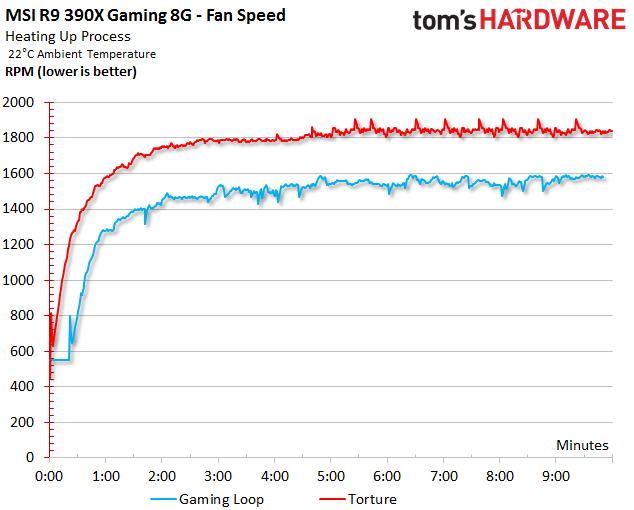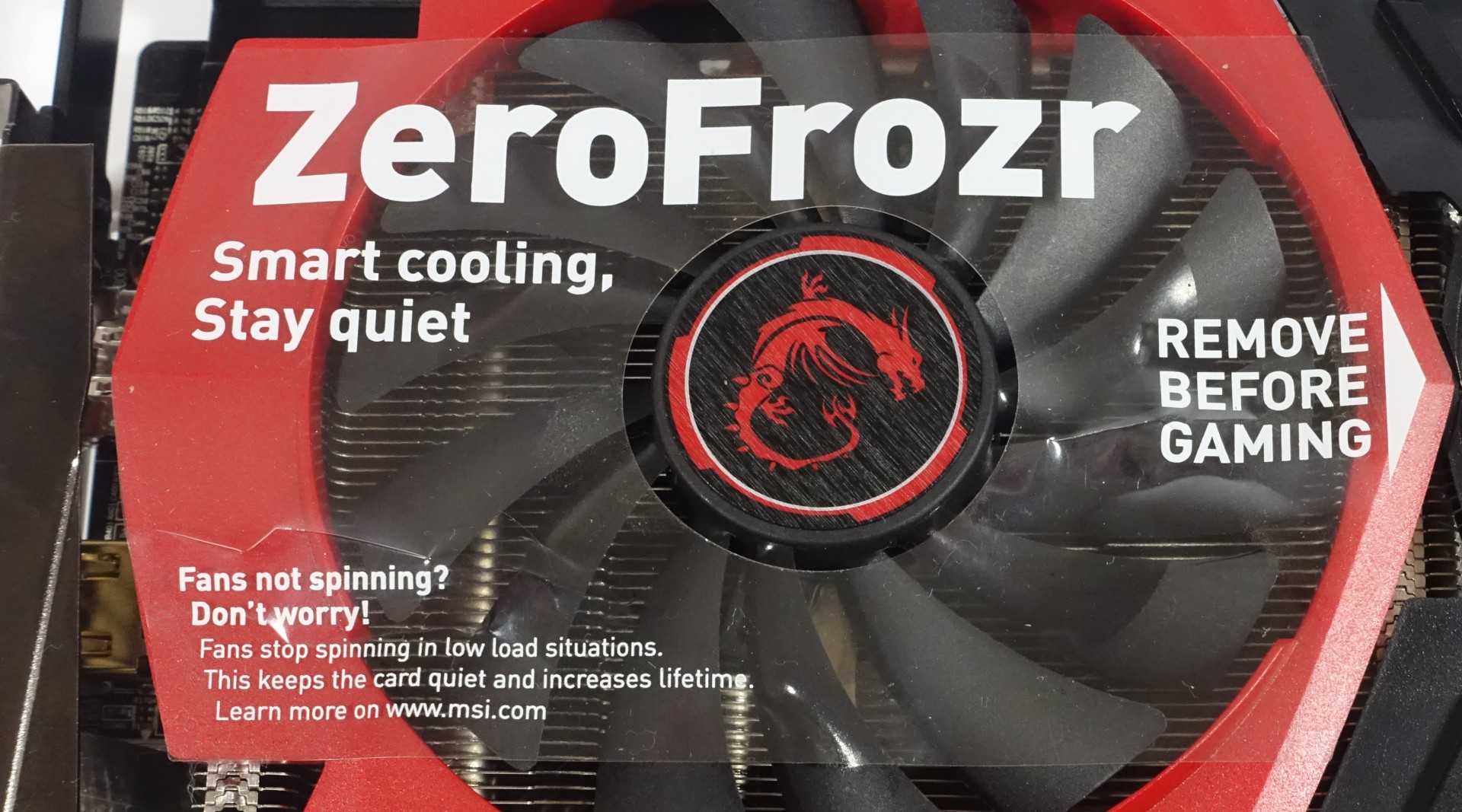AMD Radeon R9 390X, R9 380 And R7 370 Tested
AMD's 300-series Radeons dropped today, and we've got three MSI cards in the lab: the R9 390X Gaming 8G, the R9 380 Gaming 2G and the R7 370 Gaming 2G.
MSI Zero Frozr And Noise
MSI Zero Frozr
One feature that makes MSI’s new graphics cards unique is Zero Frozr, which turns off the fan during idle or low loads. This is a capability that we know from Nvidia’s three newest graphics card and it’s balanced well; there are no wild fan speed fluctuations.
We already talked about the underlying RPM curves and their corresponding thermal readings on the previous page. These fan speeds are ultimately responsible for the actual noise levels of all three graphics cards in this test.
The following graphs show how the fans rev up smoothly. They’re given a big push via extra voltage to make sure that they get going in the beginning. The underlying rationale for this is that fans do have production tolerances, which is to say that they don’t all function equally well. Of course, they get older as well. The initial bump is a pure safety feature. It’s not really audible, so you won’t find yourself annoyed by it.



Noise
We measure each graphics card's noise levels with a calibrated high-quality studio microphone 50cm away from a position perpendicular to the middle of the board. This distance, as well as the strong cardioid microphone characteristic, represents a compromise between avoiding noise generated by the fan’s airflow and ambient noise that can never be completely eliminated. Our noise-dampening efforts certainly help, but they'll never be 100 percent successful.
| Room22°C | Open BenchtableGaming Loop | Open BenchtableTorture | Closed CaseGaming Loop | Closed CaseTorture | Idle |
|---|---|---|---|---|---|
| MSI R7 370 Gaming 2G: | 32.5 dB(A) | 33.6 dB(A) | 32.4 (*) | 33.2 dB(A) | 0 dB(A) |
| MSI R9 380Gaming 2G: | 37.4 dB(A) | 38.8 dB(A) | 35.3 dB(A) | 36.3 dB(A) | 0 dB(A) |
| MSI R9 390XGaming 8G: | 38.4 dB(A) | 40.1 dB(A) | 37.2 dB(A) | 38.5 dB(A) | 0 dB(A) |
(*) Noise level of the test system was higher than that of the graphics card. It was impossible to separate the two.
Get Tom's Hardware's best news and in-depth reviews, straight to your inbox.
Current page: MSI Zero Frozr And Noise
Prev Page Infrared Temperature Measurements Next Page Conclusion
Igor Wallossek wrote a wide variety of hardware articles for Tom's Hardware, with a strong focus on technical analysis and in-depth reviews. His contributions have spanned a broad spectrum of PC components, including GPUs, CPUs, workstations, and PC builds. His insightful articles provide readers with detailed knowledge to make informed decisions in the ever-evolving tech landscape
-
Grognak 390X at 4K is the only one showing anything that could be called an improvement and that's entirely due to the additional RAM, which you can already get on a 290X. I fear for the future.Reply -
envy14tpe Again I am left disappointed....AMD please stop doing this to me. So what I learned is the 390X is the same as the 290X at 1440p or below (which is 95% or more of gamers) and the 390X only excels at 4k but still only on par with the 980 (non ti). Looks like I'm abandoning AMD for my next GPU. damn it.Reply -
FormatC ReplyWhy did you ignore 390?
I can only test what I have. Too less samples :(
The 390X is'nt a bad card per se - it depends a lot at the price and your personal preferences. -
fudoka711 Wait, I think I'm misunderstanding something. Is the 390x a rebranding of the 290x, but costing $100 more??Reply -
HideOut ReplyNice to see 980 Ti still stomps everything, glad I bought one... a wise investment!
These are rebadge cards, their new cards are due out in days. Fanboy -
de5_Roy MSI R9 390X Gaming 8G's texture fillrate in the spec table (1st page) may have been incorrect. the gpu-z screeny shows 193.6 GTexels/sec.Reply
